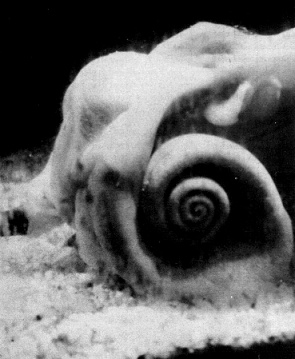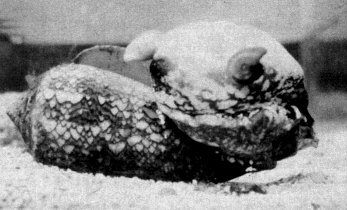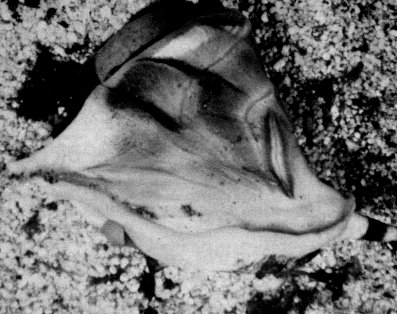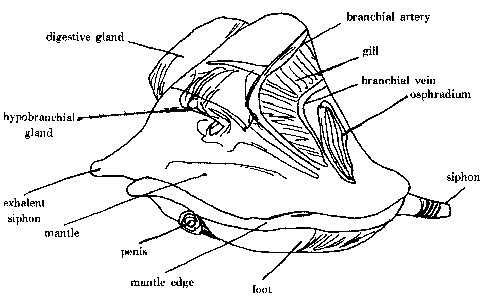|
The Naked Textile Cones |
 Keeping a marine aquarium
at home can be fascinating and sometimes reveals amazing behavior
of its inhabitants. Recently, a strange event took place at the
home of Maj. and Mrs. H. J. Bartell of Foster Village here in
Hawaii. The Bartells and their three sons have kept several Conus
textile alive in their aquarium for months, feeding them
various mollusks which they collect from areas around Oahu. The
boys have watched the C. textile sting and eat their prey, and
once even saw a couple of cones mating and then laying eggs. But
this didn't seem to unusual to the boys. What happened on February
22nd was unusual though. Keeping a marine aquarium
at home can be fascinating and sometimes reveals amazing behavior
of its inhabitants. Recently, a strange event took place at the
home of Maj. and Mrs. H. J. Bartell of Foster Village here in
Hawaii. The Bartells and their three sons have kept several Conus
textile alive in their aquarium for months, feeding them
various mollusks which they collect from areas around Oahu. The
boys have watched the C. textile sting and eat their prey, and
once even saw a couple of cones mating and then laying eggs. But
this didn't seem to unusual to the boys. What happened on February
22nd was unusual though.For no apparent reason, one of the C. textile squirmed and unwound itself out of its shell. It was quite active for 4-5 days, crawling over the sand and up the sides of the aquarium, but it refused to eat. It died after being naked for 7 days, during which time it never made any attempt to get back into its shell that lay nearby. Shortly after the first C. textile discarded its shell, a second one decided to try it. It began to slowly squirm its way out its shell at about 10 in the morning but never got completely out. It died in about 6 hours.
The photos of the "Naked Textile" were sent to Dr. Alan J. Kohn, Department of Zoology, University of Washington for examination and possible explanation of this remarkable occurrence. Dr. Kohn answered: "I have never observed the phenomenon of a Conus leaving its shell, nor do I have an explanation. Some adverse conditions must have caused the junctions of columellar muscle and shell to weaken. There are a few recorded cases of living Littorina littorea observed without shells in nature; I cannot put my hands on the reference, however. I have enclosed a diagram ... indicating the visible anatomical features. |
*Adapted from an article by Olive Schoenberg published in Hawaiian Shell News, New Series No. 127, July 1970, VOL. XVIII No. 7. Photographs by the author. **Thanks to Mr. Bob Dale for both locating and scanning the material from Hawaiian Shell News. |
 The Bartells have two other
C. textile in the aquarium which lived with the ones
that preferred a naked existence, but these two "sensible"
cones like having their protective shells around them, and they
are still very much alive and healthy.
The Bartells have two other
C. textile in the aquarium which lived with the ones
that preferred a naked existence, but these two "sensible"
cones like having their protective shells around them, and they
are still very much alive and healthy.
